Staying hydrated is important for your overall health and well-being. The body needs water to function properly, and not getting enough can lead to dehydration. This causes problems like tiredness, headaches, and muscle cramps.
Eating foods with lots of water can help you stay hydrated and avoid constant drinking of water in order to stay hydrated. Many fruits and vegetables are full of water and can add to your daily fluid intake. They also give other essential nutrients your body needs. By adding these foods to your meals and snacks, you can boost your hydration in a tasty way.
Nutritional Benefits of High-Water Foods
Water-rich foods offer more than just hydration, they provide other nutrients that keep you healthy. These benefits include:
1. Hydration and Nutrient Density
Water-rich foods help you stay hydrated while providing essential vitamins and minerals. Fruits like watermelon and strawberries are full of water and vitamin C. Cucumbers have lots of water plus vitamin K.
Also, leafy green vegetables like spinach and lettuce give you water along with folate and iron. Zucchini provides water, fiber, and potassium. These foods fill you up with little calories. They boost your daily water intake. They also give you important nutrients your body needs to work well.
2. Impact on Overall Health
Eating foods with high water content help the body in many ways. They include:
- Keeping your skin healthy and clear
- Giving a sense of fullness to eat less
- Make it easier to keep a healthy weight
- Providing fiber for proper digestion
These foods can also lower your risk of some health problems. They may help prevent:
- Kidney stones
- Urinary tract infections
- Constipation
Foods High in Water to Prevent Dehydration
Here are 30 foods with high water content and hydrating power and recommendations of how you can include them in your diet to enhance hydration.
1) Cucumber

Cucumbers are a top choice for staying hydrated. They contain about 95% water, making them one of the most water-rich foods you can eat.
Snacking on cucumbers can help you meet your daily fluid needs. A cup of sliced cucumbers provides nearly a half cup of water. They are low in calories but packed with nutrients. They contain vitamin K, potassium, and magnesium.
You can eat them raw as a snack, add them to salads, or use them in sandwiches. For a refreshing drink, try adding cucumber slices to your water. This can make staying hydrated more enjoyable.
Cucumbers also offer other health benefits. They contain antioxidants that help reduce inflammation in your body. The peel of cucumbers is a good source of fiber. Eating the peel support your digestive health.
Note: Remember to wash cucumbers thoroughly before eating. This removes any dirt or potential contaminants on the surface.
2) Watermelon
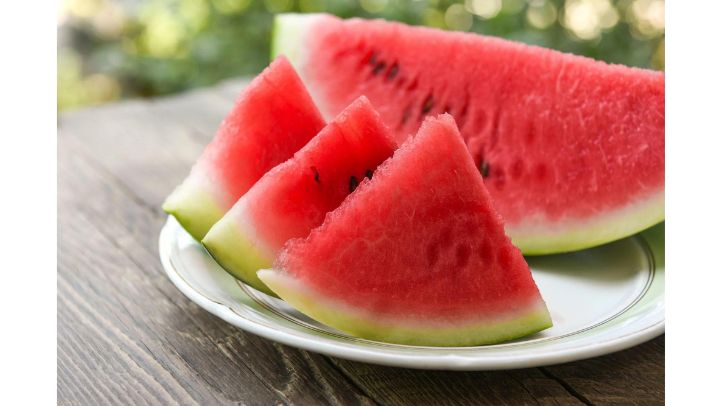
Watermelon is a fantastic choice of food to stay hydrated. This juicy fruit contains about 92% water, making it one of the most water-rich foods you can eat.
A single cup of watermelon provides over half a cup of water. This implies you’re not just enjoying a tasty snack, but also boosting your fluid intake.
Watermelon is low in calories and packed with nutrients. It’s a good source of vitamins A and C, which support your immune system, vision, and skin health. It also contain lycopene, an antioxidant responsible for the red color of the fruit. Lycopene benefits the heart health and sun protection.
Eating watermelon can be a refreshing way to combat dehydration, especially on hot summer days. It’s easy to eat and can be enjoyed in various ways.
Try adding watermelon to fruit salads, blending it into smoothies, or simply eating it on its own. You can even grill watermelon for a unique twist.
Note: Remember to choose ripe watermelons for the best flavor and highest water content. Look for ones that are heavy for their size and have a yellow spot on the bottom.
3) Strawberries

Strawberries are a tasty way to boost your hydration. These juicy berries contain about 92% water, making them an excellent choice to quench your thirst.
Eating strawberries can help you meet your daily fluid needs. They’re not just water-rich, but also packed with important nutrients. Strawberries contain vitamin C, fiber, and antioxidants. A cup of sliced strawberries provides nearly 100 mg of vitamin C, which is more than your daily requirement.
You can enjoy strawberries in many ways. Eat them fresh, add them to salads, or blend them into smoothies. They’re versatile and easy to include in your diet.
Strawberries are low in calories but high in flavor. This makes them a great snack option if you’re watching your weight while trying to stay hydrated.
Research suggests that eating strawberries may help prevent type 2 diabetes. This benefit, combined with their hydrating properties, makes them a smart food choice.
Note: For the best hydration benefits, choose fresh strawberries. Frozen ones work too, but avoid dried strawberries as they have less water content.
4) Cantaloupe

Cantaloupe is a great choice for staying hydrated. This sweet melon is packed with water, making it an excellent snack on hot days.
Cantaloupe is about 90% water by weight. Eating it can help you meet your daily fluid needs.
This fruit also provides important vitamins and minerals. It’s rich in vitamin C, which supports your immune system. Cantaloupe contains vitamin A too, which is good for your eyes and skin.
You’ll get a dose of potassium from cantaloupe as well. This mineral helps regulate blood pressure and supports heart health. Cantaloupe is low in calories but high in fiber. This makes it filling and good for digestion.
You can eat it plain, add it to fruit salads, or blend it into smoothies. It’s also tasty when paired with prosciutto for a sweet and salty treat.
Note: For the best flavor and nutrition, choose cantaloupes that feel heavy for their size. The rind should have a raised, net-like pattern and smell sweet at the stem end.
5) Zucchini

Zucchini is a hydrating vegetable that can help you stay refreshed. It contains about 92% water, making it an excellent choice for boosting your water intake.
This summer squash is low in calories but packed with nutrients. It contains vitamins A, C, and K when you eat zucchini. It also provides minerals like manganese, potassium, and magnesium.
Zucchini offers more than just hydration. It fiber content aids digestion and helps give a sense of fullness. The vegetable also contain antioxidants like lutein, which benefit your eye health.
You can eat eat zucchini raw in salads, grilled as a side dish, or spiralized into noodles. It’s versatile and easy to add to your meals.
For a hydrating snack, slice zucchini into sticks and eat them with hummus. You can also add grated zucchini to smoothies for an extra boost of water and nutrients.
6) Lettuce

Lettuce is a fantastic food to help you stay hydrated. It’s made up of about 96% water, making it one of the most water-rich vegetables to include in your dishes.
There are many types of lettuce to choose from. Iceberg lettuce has the highest water content, but romaine, butterhead, and leaf lettuces are also great options.
You can use lettuce as a base for salads, put it in sandwiches, or use the leaves as wraps for other foods.
Lettuce isn’t just good for hydration. It also provides fiber, vitamins, and minerals. These nutrients support your overall health while helping you stay hydrated.
For the best hydration benefits, eat lettuce fresh and raw. Cooking lettuce can reduce its water content. Try mixing different types of lettuce in your salads for varied flavors and textures. This can make your hydrating meals more interesting and enjoyable.
7) Celery

Celery is a great choice for staying hydrated. This crunchy vegetable is 95% water, making it one of the most water-rich foods you can eat.
A single stalk of celery contains about a quarter cup of water. This means you can easily boost your fluid intake by snacking on celery throughout the day.
Celery is also low in calories and high in fiber. It’s a good source of vitamins K and C, as well as potassium and folate.
You can eat it raw as a snack, add it to salads, or use it as a base for soups and stews. For a tasty treat, try spreading peanut butter or hummus on celery sticks.
Celery’s high water content helps keep you hydrated, but it also contributes to the vegetable’s crisp texture. This crunchiness makes celery a satisfying snack that can help curb hunger between meals.
Note: Remember to wash celery thoroughly before eating. Its fibrous structure can trap dirt and bacteria, so a good rinse is important for food safety.
8) Tomatoes

Tomatoes are a great food to help you stay hydrated. They contain about 94% water, making them an excellent choice to stay hydrated.
These red fruits are low in calories but packed with nutrients. A cup of chopped tomatoes has only 32 calories while providing a good amount of vitamin C, potassium, and fiber.
Tomatoes are versatile and easy to add to your diet. You can eat them raw in salads, sandwiches, or as a snack. They’re also tasty when cooked in sauces, soups, or stews.
The high water content in tomatoes helps keep you hydrated while also contributing to healthy skin. Their natural juices can help quench your thirst on hot days.
Tomatoes contain antioxidants like lycopene, a carotene responsible for it red color. This compound help protect against cells damage.
You can choose from different types of tomatoes, including cherry, grape, beefsteak, and Roma. All varieties offer hydration benefits and a burst of flavor to your meals.
9) Radishes

Radishes are a great choice for staying hydrated. These crunchy vegetables have a high water content of about 95%.
Radishes add a spicy-sweet flavor to your meals. You can eat them raw in salads or as a snack. They’re also tasty when cooked or pickled.
These bright red bulbs are low in calories but packed with nutrients. They contain vitamin C, which supports your immune system. Radishes are also a good source of fiber, this helps with digestion and give you a sense of fullness, such that you eat less and consequently reduce your calorie intake.
You can find radishes year-round in most grocery stores. They’re easy to add to your diet and can help boost your daily water intake.
Try slicing radishes thinly and adding them to sandwiches or wraps. You can also roast them for a milder flavor.
Note: Remember to wash radishes well before eating. The leaves are edible too and can be added to salads or cooked dishes.
10) Bell Peppers

Bell peppers are a colorful and crunchy way to boost your body hydration. These vibrant vegetables are about 92% water, making them an excellent choice for staying hydrated.
You can enjoy bell peppers raw as a snack or add them to salads and other dishes. They come in various colors like red, yellow, green, and orange, each offering a slightly different flavor profile.
Besides their high water content, bell peppers are packed with vitamins and minerals. They’re especially rich in vitamin C, which supports your immune system, growth and repair of tissues, and skin health.
Bell peppers are low in calories but high in fiber. This combination can help you feel full and satisfied while supporting healthy digestion.
You can easily incorporate bell peppers into your meals by slicing them for dipping, adding them to stir-fries, or stuffing them with other nutritious ingredients for a filling meal.
11) Cauliflower

Cauliflower is a great choice for staying hydrated. This versatile vegetable contains about 92% water, making it an excellent source of hydration.
Cauliflower is low in calories but high in vitamins C and K, as well as fiber and antioxidants.
You can enjoy cauliflower raw, steamed, roasted, or added to soups and stews. Raw cauliflower florets make a crunchy, hydrating snack.
Try adding cauliflower to your salads for extra water content and nutrition. You can also use it as a low-carb substitute for rice or potatoes in many dishes.
Cauliflower’s high water content helps you meet your daily fluid needs. It’s especially helpful during hot weather or after exercise when you need extra hydration. You can buy it fresh, frozen, or pre-cut for convenience.
12) Spinach
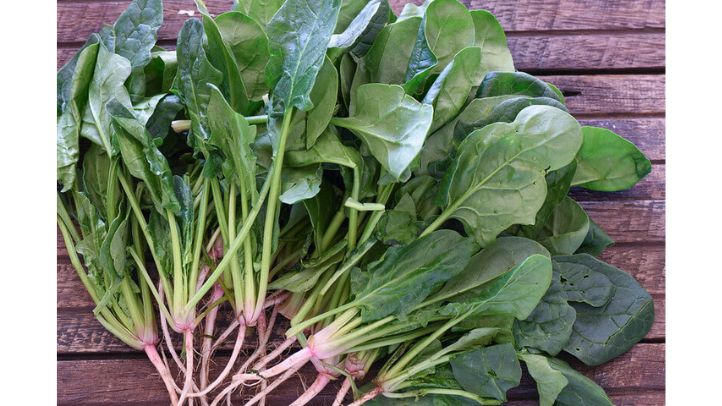
Spinach is a leafy green vegetable that packs a hydrating punch. It contains about 91% water, making it an excellent choice for boosting your water intake.
You can easily add spinach to your diet in various ways. Try tossing it into salads, blending it into smoothies, or sautéing it as a side dish.
Besides its high water content, spinach is rich in vitamins A, C, and K, as well as iron and calcium.
Eating spinach can help you stay hydrated while also providing important nutrients. Its water content and nutritional profile make it a smart choice for maintaining proper hydration levels.
You can enjoy spinach raw or cooked. Both options will contribute to your daily fluid intake, so choose the preparation method you prefer.
Consider incorporating spinach into your meals regularly. It’s a versatile ingredient that can help you meet your hydration needs while adding flavor and nutrients to your diet.
13) Broccoli

Broccoli is a water-rich vegetable that can help you stay hydrated. It contains about 89% water by weight.
Broccoli is packed with vitamins C and K, fiber, and antioxidants. You can enjoy broccoli raw or cooked. Raw broccoli provides the most water content. Try adding it to salads or eating it as a crunchy snack with dip.
Steamed broccoli is another great option. It retains most of its water and nutrients while becoming more tender.
Broccoli’s high water content helps you meet your daily fluid needs. It’s an easy way to boost hydration through your regular meals.
14) Pineapple

Pineapple is a juicy tropical fruit that can keep you hydrated. It contains about 87% water, making it an excellent choice for constant hydration.
Pineapple provides vitamin C, manganese, and an enzyme called bromelain. These ingredients are essential for growth and healthy living. Bromelain is a dietary supplement approved by the Foods and Drugs Administration (FDA) to reduce inflammation and swellings, especially in the nasal passages.
The high water content in pineapple can help you meet your daily hydration needs. Eating pineapple can be especially helpful on hot days or after exercise.
You can enjoy pineapple in many ways. Try it fresh, frozen, or added to smoothies. It also makes a great topping for yogurt or oatmeal.
15) Oranges
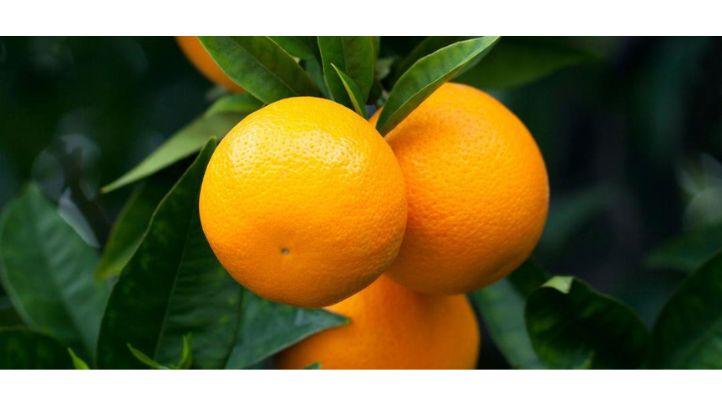
Oranges are a juicy fruit with high water content that can help you stay hydrated. They contain about 87% water, making them a great snack to boost your fluid intake.
One medium-sized orange provides around 4 ounces of water. This is about half a cup, which can contribute to your daily hydration needs.
Oranges are also contain vitamin C. This nutrient supports your immune system and helps your body absorb iron from other foods.
The fiber in oranges also aid digestion. This may help you eat less and maintain a healthy weight.
You can enjoy oranges in many ways. Eat them fresh, add slices to salads, or squeeze them for juice. Orange zest can also add flavor to baked goods and marinades.
For maximum hydration benefits, eat the whole fruit rather than drinking the juice. The fiber in whole oranges slows down digestion, helping your body absorb more water.
Oranges make a great on-the-go snack. They come in their own natural packaging and are easy to peel. Keep a few in your bag for a quick hydration boost during the day.
16) Apples
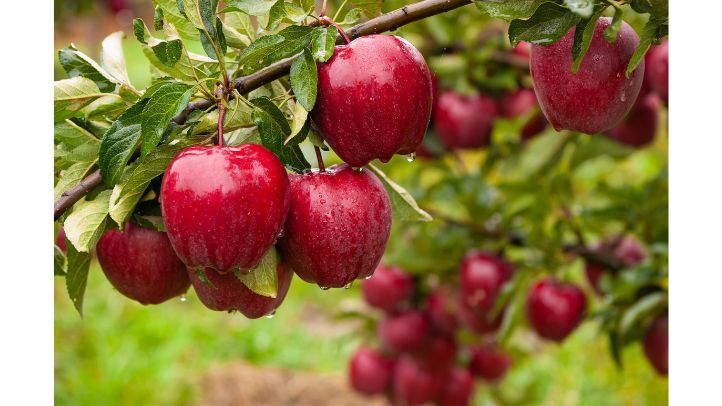
Apples are a tasty way to boost your water intake. These crisp fruits contain about 84% water, making them a hydrating snack choice.
Eating an apple can help quench your thirst and contribute to your daily fluid needs. The high water content in apples also helps you feel full, which may aid in weight management.
Apples are easy to pack and carry, making them a convenient option for on-the-go hydration. You can slice them up for a quick snack or add them to salads for extra crunch and moisture.
Besides water, apples contain fiber, vitamins, and antioxidants. The fiber in apples supports digestive health and can help regulate blood sugar levels.
To get the most hydration from apples, eat them fresh and whole. The skin contains valuable nutrients and fiber, so try to keep it on when possible.
17) Peaches
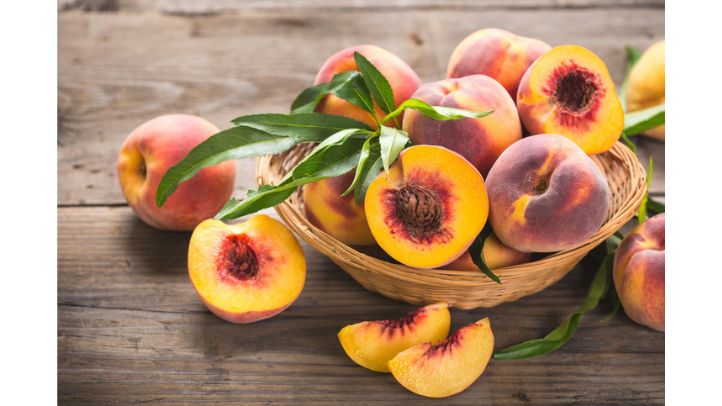
Peaches are a delicious way to boost your hydration. These fuzzy stone fruits contain about 88% water by weight.
Eating a medium peach gives you around 5 ounces of water. That’s a good amount to help meet your daily fluid needs.
Peaches also provide fiber, vitamins, and minerals. They’re especially high in vitamin C, which supports your immune system.
You can enjoy peaches in many ways. Eat them fresh as a snack or add slices to salads and yogurt. They’re also great grilled or baked into desserts.
For maximum hydration, choose ripe peaches. They’ll be softer and juicier than unripe ones. The skin is edible and contains nutrients, so feel free to eat it. Canned peaches can work too, but pick ones packed in water rather than syrup. This avoids extra sugar while still giving you the fruit’s hydrating benefits.
18) Raspberries

Raspberries are a delicious way to boost your hydration. These small red berries contain about 86% water.
Raspberries fiber, vitamin C, and antioxidants when you snack on them. These nutrients support your overall health while helping you stay hydrated.
Try adding raspberries to your breakfast or as a mid-day snack. You can also blend them into smoothies for a hydrating drink.
Fresh raspberries are best, but frozen ones work too. They’re easy to find in most grocery stores year-round.
Note: Remember to wash raspberries before eating them. This removes any dirt and ensures you’re getting clean, hydrating fruit.
19) Blueberries
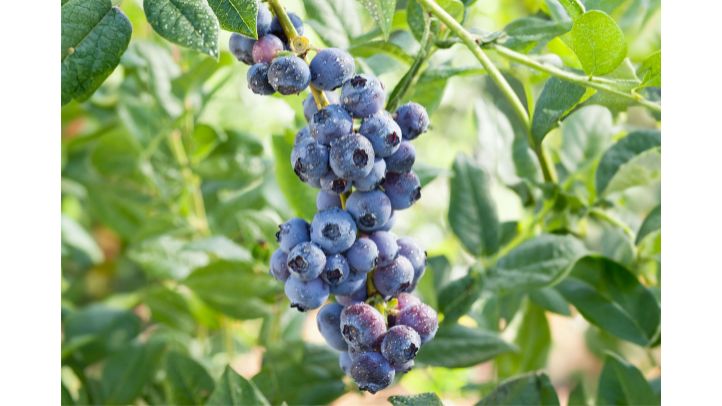
Blueberries are a great choice for staying hydrated. These small, round berries contain about 85% water. Eating blueberries can help you meet your daily fluid needs. They’re easy to add to your diet and can be enjoyed fresh or frozen.
Besides water, blueberries contains vitamins C and K, fiber, and antioxidants. These nutrients support cell growth and repair, prevent cell death, and improve overall human health.
You can eat blueberries on their own or mix them into yogurt, oatmeal, or smoothies. They also make a tasty topping for salads or desserts.
For the best hydration benefits, choose fresh blueberries. Frozen ones work too, but avoid dried blueberries as they have less water content.
Note: Remember to wash your blueberries before eating them. This removes any dirt or bacteria on the surface.
20) Plums
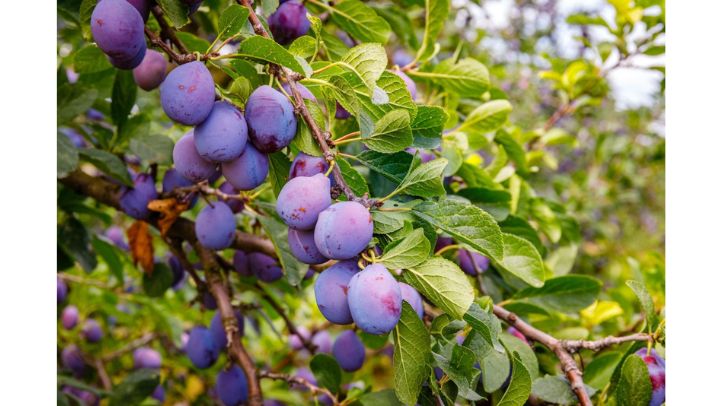
Plums can help you stay hydrated. These juicy fruits contain about 85% water. They exist in different varieties. Some are sweet while others are tart. They all provide hydration benefits along with vitamins and minerals.
You can enjoy plums fresh as a snack. They also work as sliced into salads or yogurt. Dried plums, known as prunes, have less water but still offer some hydration.
Plums also contain fiber. This aid digestion and keeps you feeling full. The natural sugars in plums give you a quick energy boost.
Note: Remember to wash plums before eating them. You can store ripe plums in the fridge to keep them fresh longer. Unripe plums can sit at room temperature until they soften.
21) Pears

Pears are a tasty and hydrating fruit you can enjoy. They contain about 84% water. Eating pears contribute to your daily fluid intake. One medium-sized pear provides around 5 ounces of water, which is about 10% of your daily water needs.
Pears are also rich in fiber. This helps slow down digestion and keeps you feeling full longer. The fiber in pears can aid in maintaining healthy digestion.
They’re a good source of vitamin C, potassium, and copper. These nutrients are essential nutrient to the body and serve as dietary supplement and prevent deficiency symptoms such as scurvy.
Pears come in different varieties. You can choose from Bartlett, Anjou, Bosc, and more. Each type has a slightly different flavor and texture.
You can eat pears raw as a snack or add them to salads. They’re also tasty when baked or poached. Try adding sliced pears to your morning oatmeal or yogurt for extra hydration and flavor.
Remember to wash pears before eating them. You can eat the skin, which contains additional fiber and nutrients.
22) Grapefruit

Grapefruit is a juicy citrus fruit that can help keep you hydrated. It contains about 88% water. This tangy fruit is low in calories but packed with nutrients. A half grapefruit provides about a quarter of your daily vitamin C needs.
Grapefruits come in different varieties, including pink, red, and white. The pink and red types contain lycopene, an antioxidant that offer protective effect to body cell from scavenging free radicals.
You can enjoy grapefruit by eating it fresh, adding it to salads, or squeeze it for juice. Some people like to sprinkle a little sugar on top to balance the tartness.
Grapefruits are available year-round in most grocery stores. They’re at their peak from winter to early spring.
Note: Remember that grapefruit can interact with some medications. If you’re taking any drugs, check with your doctor before eating grapefruit regularly.
23) Carrots

Carrots are a crunchy and nutritious vegetable that can help you stay hydrated. These orange root vegetables contain about 88% water.
They’re packed with beta-carotene, which the body converts to vitamin A. This nutrient is important for eye health and immune function.
Carrots also offer fiber, which aids digestion and helps you feel full. You can enjoy them raw as a snack or add them to salads for extra crunch and hydration. They’re also tasty when cooked in soups or stews.
Try grating carrots into your morning smoothie for a subtle sweetness and extra hydration boost. You can also juice them for a refreshing drink that’s high in both water and nutrients.
24) Kiwifruit

Kiwifruit is a small, oval-shaped fruit that packs a hydrating punch. This fuzzy brown fruit with bright green flesh contains about 84% water.
One medium kiwi has only 42 calories but offers a good amount of vitamin C, potassium, and fiber. Kiwifruit also contains enzymes that may aid digestion. This can be helpful when you’re trying to maintain good hydration levels, as proper digestion plays a role in fluid balance.
To get the most hydration from kiwifruit, eat it fresh and ripe. You can tell a kiwi is ripe when it yields slightly to gentle pressure. Avoid overripe or mushy kiwis, as they may have lost some of their water content.
25) Mangoes

Mangoes are a delicious tropical fruit that can help you stay hydrated. They contain about 83% water. A medium-sized mango provides about 1 cup of water. This juicy fruit is not only refreshing but also packed with vitamins and minerals.
Mangoes are rich in vitamin C, which supports your immune system. They also contain vitamin A, important for eye health and skin.
You can enjoy mangoes in many ways. Eat them fresh, add them to smoothies, or use them in salads. They’re also great in salsas or as a topping for yogurt.
Mangoes are available year-round in many places. When picking a mango, choose one that gives slightly when squeezed. This means it’s ripe and ready to eat.
26) Apricots

Apricots are a juicy fruit that can help you stay hydrated. They contain about 86% water. Apricots are rich in vitamins A and C, which improve vision, support your immune system and skin health.
You can enjoy apricots fresh, dried, or canned. Fresh apricots are best for hydration due to their higher water content. Eat them as a snack or add them to salads and smoothies.
Apricots also provide fiber, which aids digestion and helps you feel full. This makes them a smart choice for a light, hydrating snack between meals.
Note: Remember to wash fresh apricots before eating. You can also try freezing them for a cool, refreshing treat on hot days.
27) Cherries
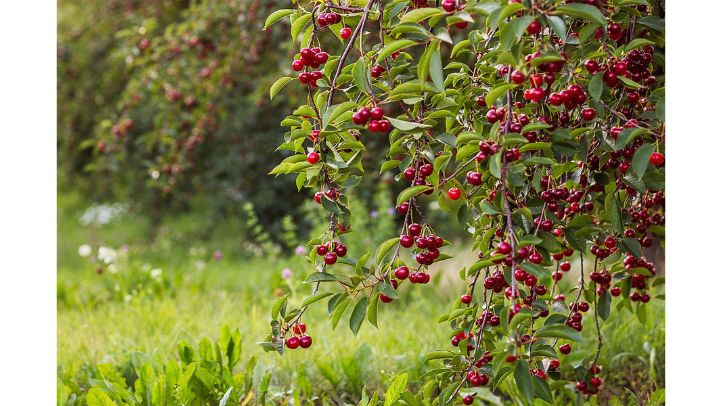
Cherries are a tasty fruit that can help you stay hydrated. They contain about 80% water.
These small, round fruits come in sweet and tart varieties. Both types offer hydration benefits along with other nutrients.
Cherries provide vitamin C, potassium, and antioxidants. You can enjoy cherries fresh, frozen, or dried. Fresh and frozen cherries have the highest water content. Dried cherries lose some moisture during processing.
Note: Remember to wash fresh cherries before eating them. This removes any dirt or pesticides on the skin.
28) Grapes

Grapes are a tasty and hydrating snack. They contain about 81% water. They come in different colors like red, green, and purple. All types are good for hydration.
Besides water, grapes offer other health benefits. They have vitamins C and K, plus antioxidants that are good for your body.
Eating a cup of grapes gives you both hydration and nutrients. It’s a simple way to help prevent dehydration while enjoying a sweet snack.
Try adding grapes to your diet in various ways. Mix them into salads, blend them in smoothies, or just eat them as they are.
Note: Remember to wash grapes before eating them. This removes any dirt or pesticides that might be on the skin.
29) Blackberries
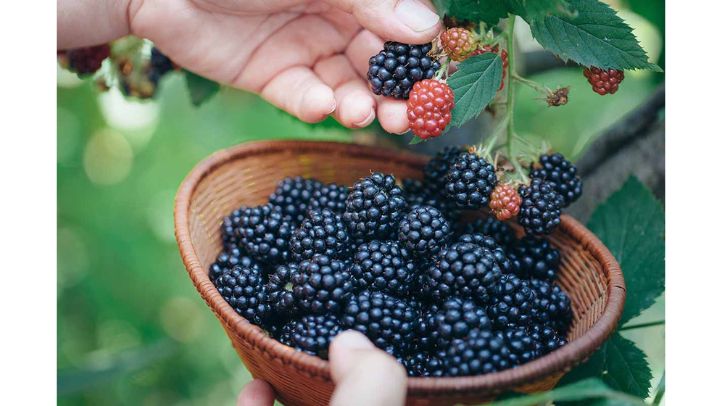
Blackberries are a tasty way to boost your hydration. These juicy berries contain about 88% water.
Snacking on blackberries can help you meet your daily fluid needs. A cup of blackberries provides around 3/4 cup of water, contributing to your overall hydration.
They’re packed with fiber, which aids digestion and helps you feel full. You’ll also get a good dose of vitamin C and antioxidants from these berries.
Adding blackberries to your diet is easy. Eat them fresh as a snack, toss them in yogurt, or blend them into smoothies. You can even use them to top salads for a burst of flavor and hydration.
Frozen blackberries work well too. They make a refreshing treat on hot days and can be used in various recipes. Try adding them to your morning oatmeal or baking them into muffins.
Note: Remember to wash fresh blackberries before eating. This removes any dirt or pesticides that might be on the surface.
30) Papayas
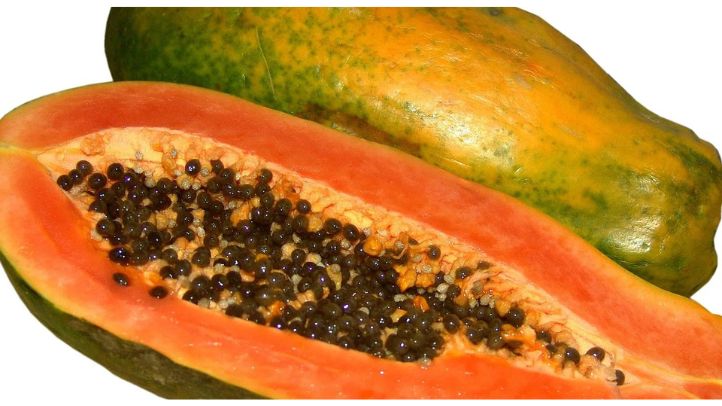
Papayas are tropical fruits packed with water. They can help you stay hydrated and avoid dehydration.
These fruits contain about 88% water. They’re rich in vitamin C, which supports your immune system. The fruit contains fiber that aids digestion and helps prevent constipation.
The enzymes in papayas help to reduce bloating. This can make you feel more comfortable, especially in hot weather when dehydration is a risk.
Papayas are versatile fruits. You can eat them on their own or pair them with other hydrating foods like yogurt or cottage cheese.
Conclusion
Foods, including fruits and vegetables rich in water are excellent source of constant hydration and other essential nutrients to the body. The foods not only keep you hydrated, it also provide nutrient that ennsure your overall wellbeing.
Choose one or more of the foods listed above stay hydrated everytime. However, these foods shouldn’t replace drinking water. Include them as part of a balanced diet alongside other water-rich foods and plenty of fluids.
Frequently Asked Questions
What are some top food choices for rehydrating the body effectively?
Cucumber, watermelon, and strawberries are excellent choices for rehydration. These foods have high water content and provide vitamins and minerals. Eating them can boost your fluid intake and help keep you hydrated.
Can you list vegetables that are particularly rich in water?
Cucumber and zucchini are very high in water. Lettuce, celery, and tomatoes also contain a lot of water. Adding these veggies to your meals can help you stay hydrated throughout the day.
How do certain foods help in preventing dehydration in adults?
Water-rich foods help prevent dehydration by adding to your daily fluid intake. They often contain electrolytes and vitamins that support hydration. Eating these foods along with drinking water can keep your body well-hydrated and functioning properly.
